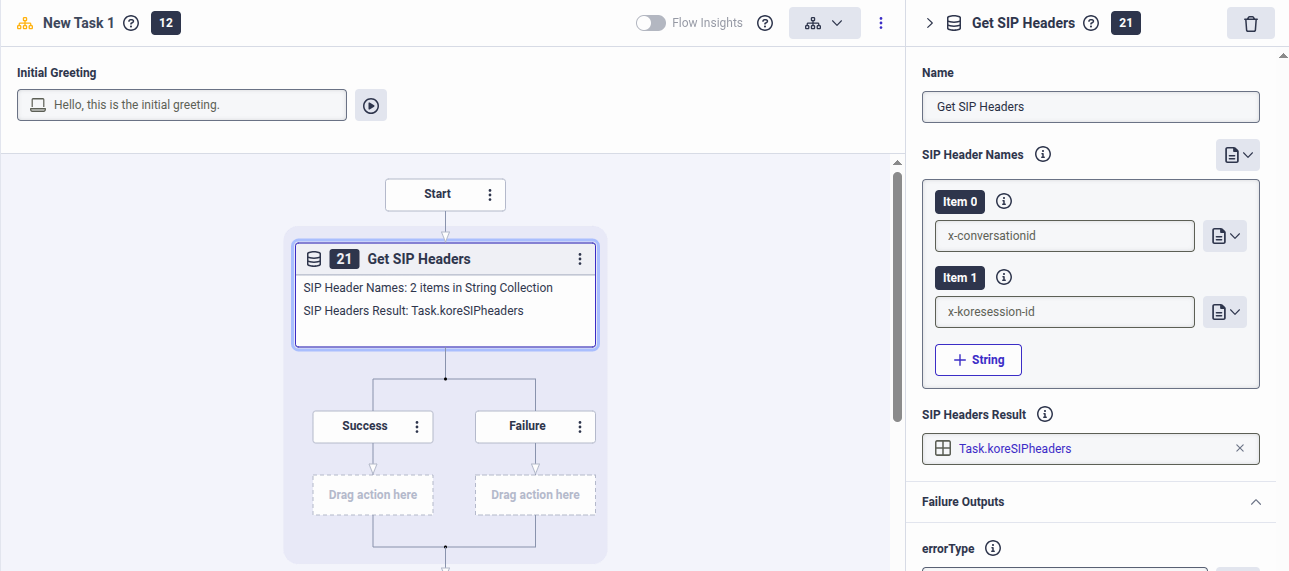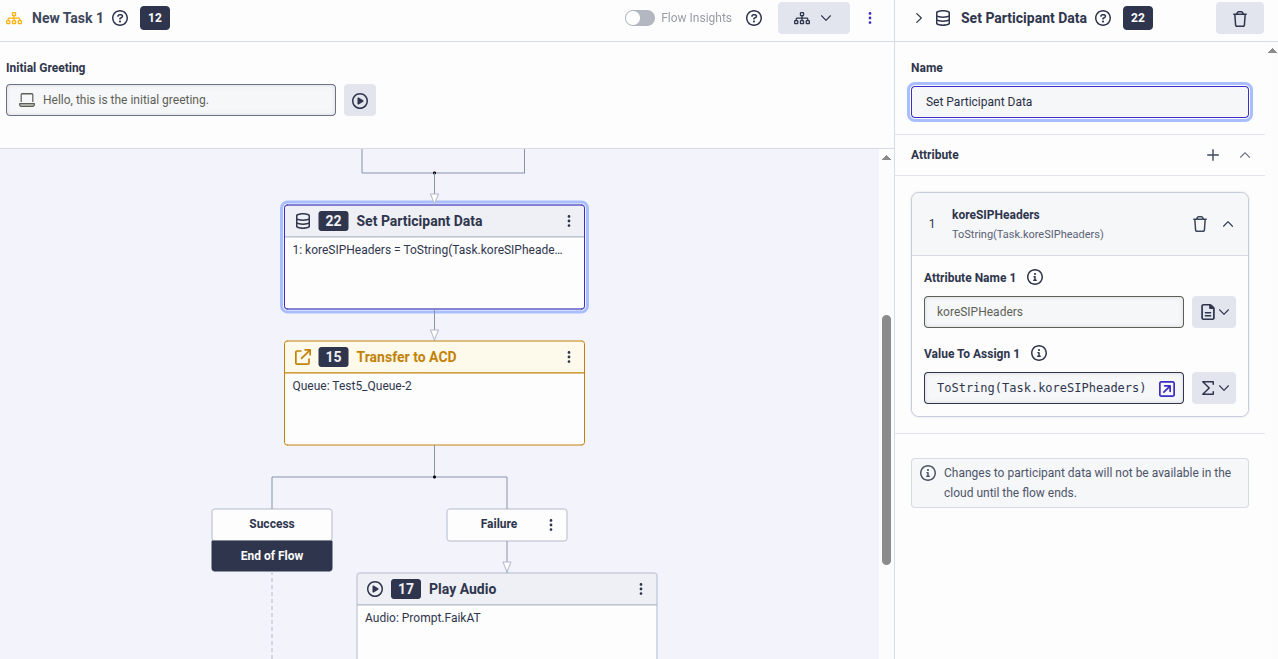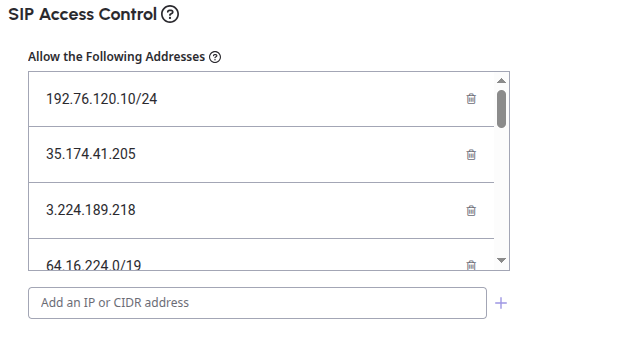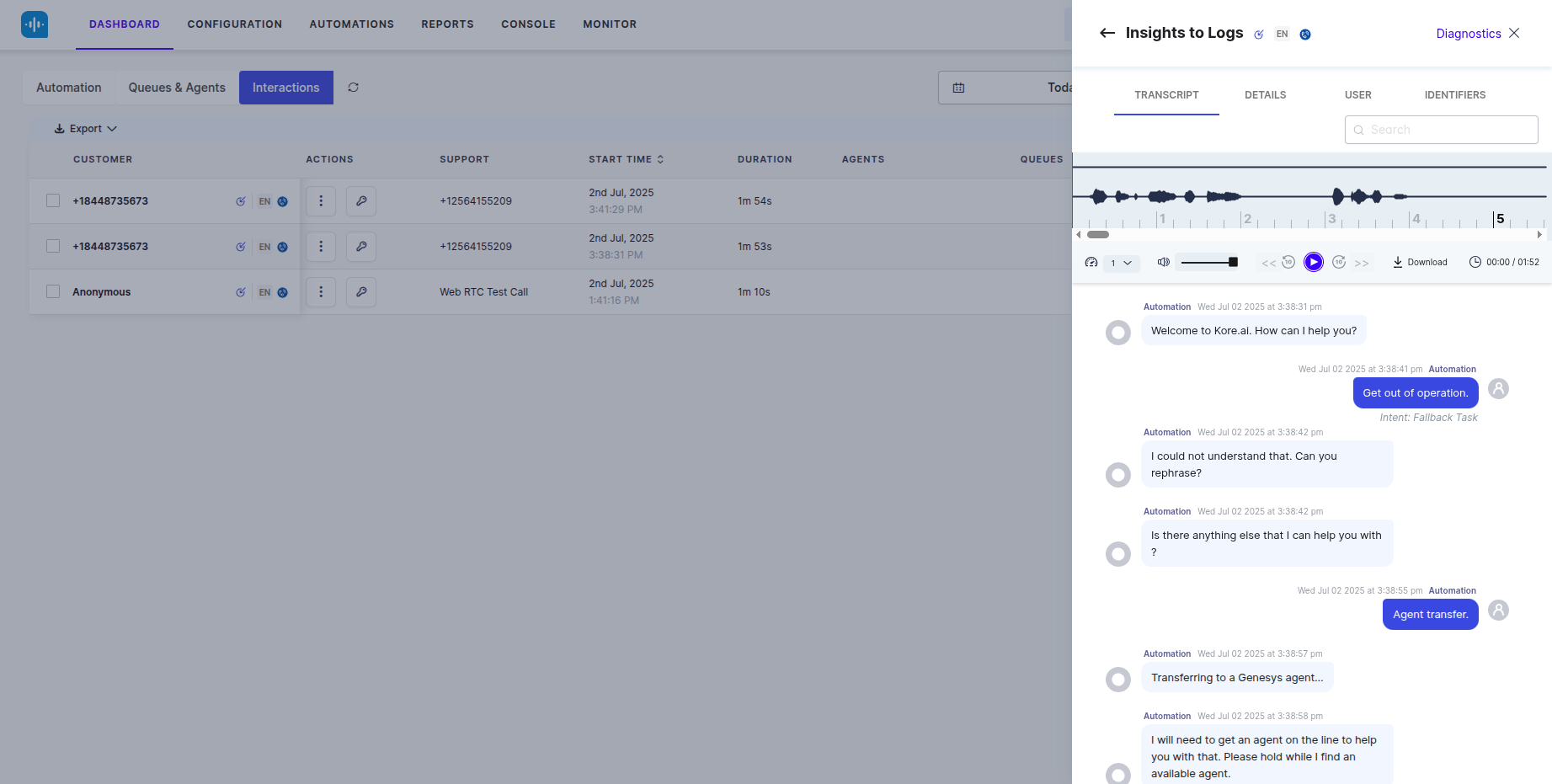Introduction
This document outlines the step-by-step process for handing over a call initiated from SmartAssist to Genesys Cloud CX, with AgentAssist pre-installed on the Genesys desktop.
Prerequisite
- SmartAssist, XO Platform, and AgentAssist accounts with administrator access.
- Genesys Cloud CX account with admin role.
- Familiarity with creating an Architect flow in Genesys.
- Familiarity with creating an External trunk in Genesys.
SmartAssist Configuration for Automation
1. Create/Import App into XO Platform
- Log in to SmartAssist.
- Go to the Automations tab.
- Click +Add Bot.
- Publish the bot to enable the SmartAssist channel.
2. Purchase a Phone Number
- In the Configuration tab, under the Channels > Voice > Phone Numbers.
- Click +New to purchase a phone number.
- This phone number should be attached to an Experience flow.
3. Create Experience Flow in SmartAssist
- Create a new flow in SmartAssist by clicking +New Flow.
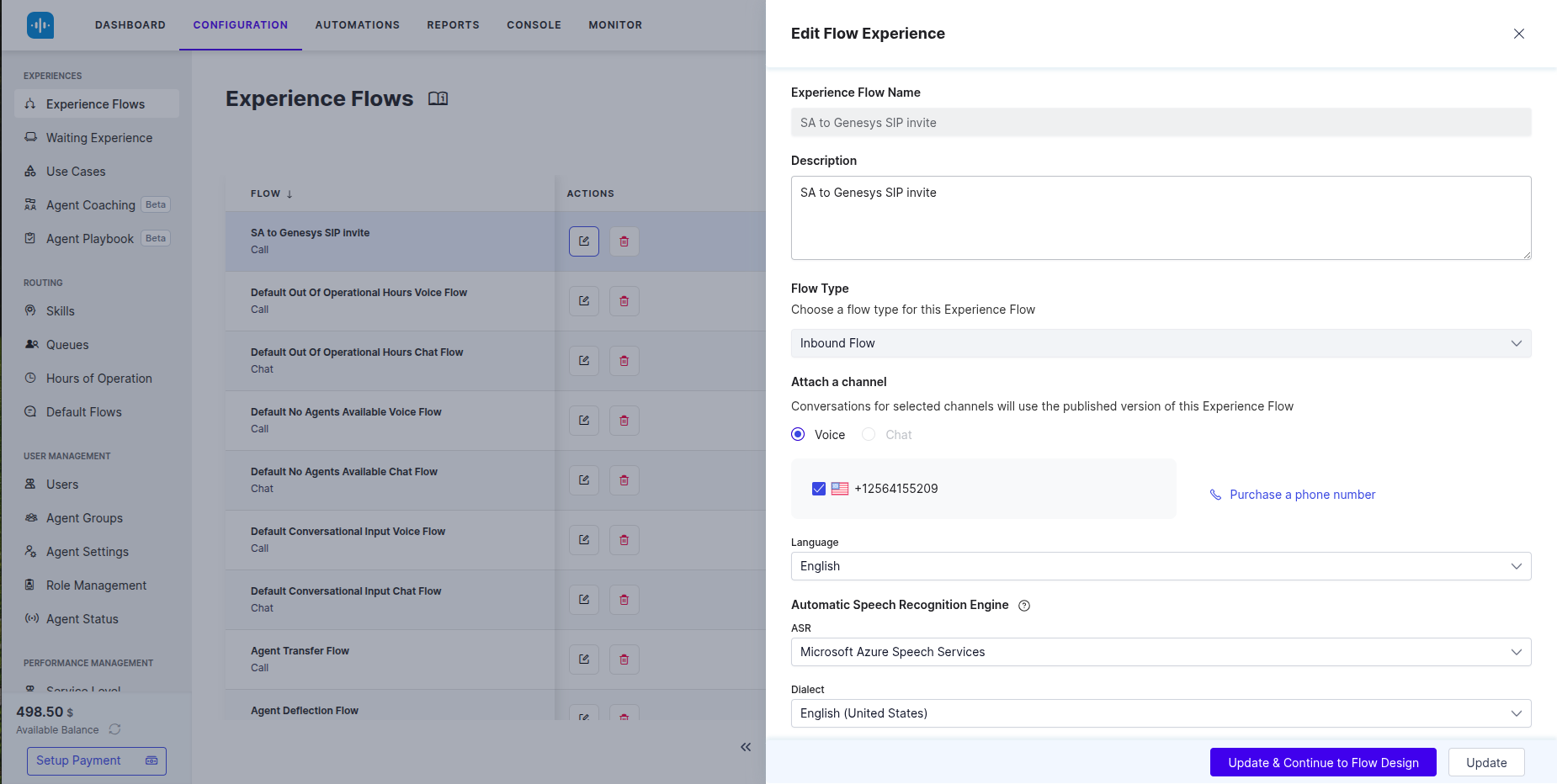
- In the experience flow, add a Script Task node and add the following code:
agentUtils.setAgentTranscribe({transcribe:true});
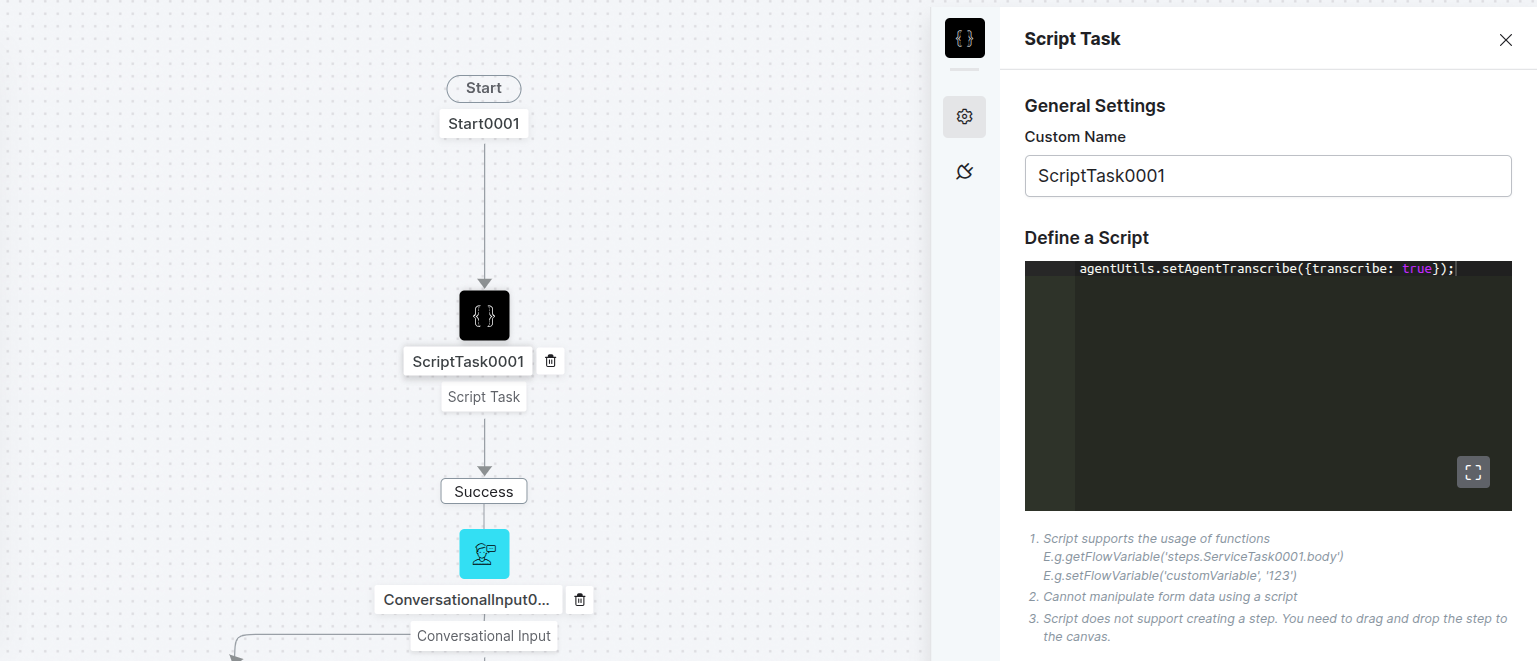
- You can add a Conversation Input or a Run Automation node to configure the Bot for the automation.
- You can add an Agent Transfer node in the experience flow to transfer the call to Genesys agents.
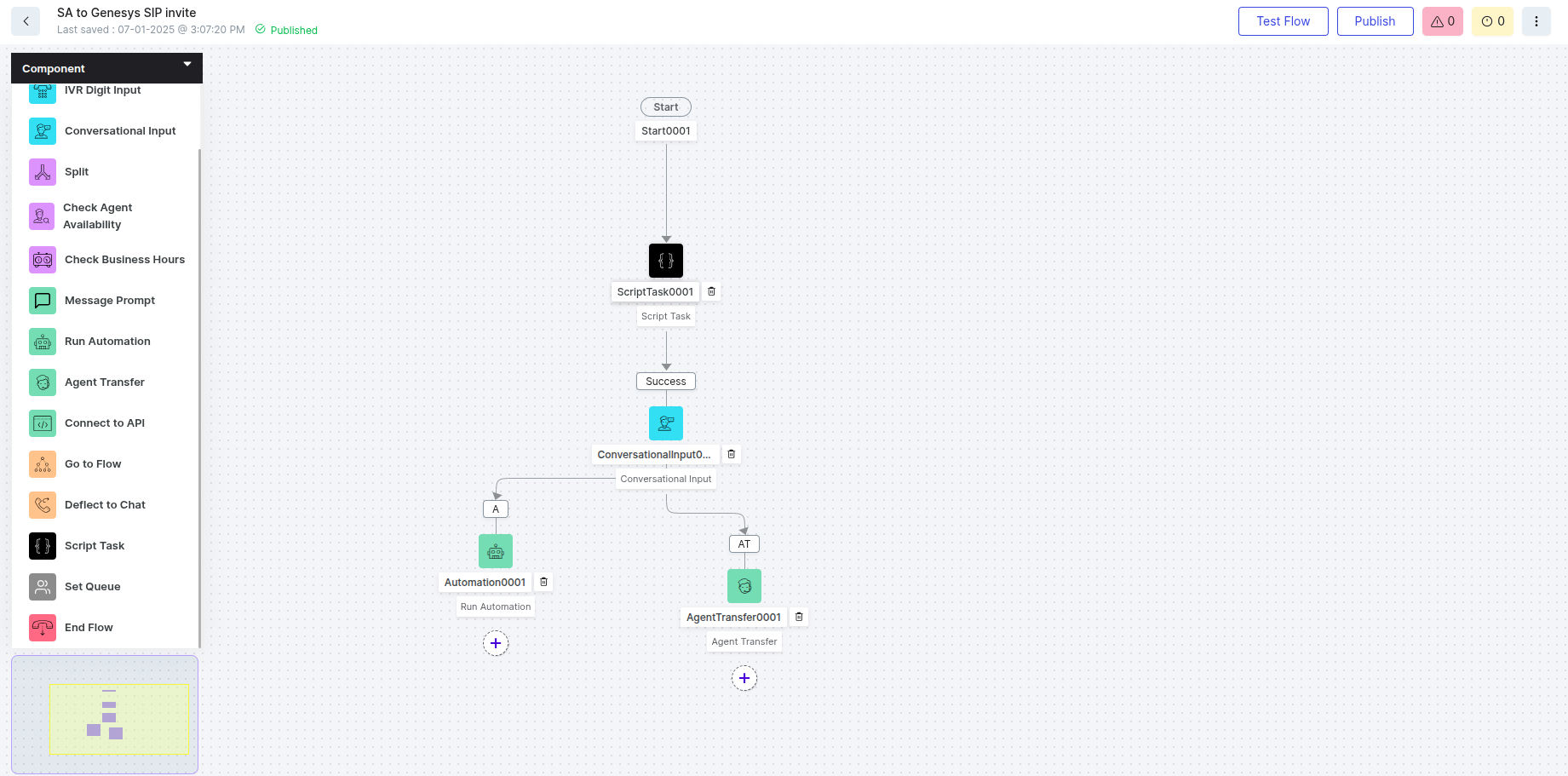
- Publish the flow.
- Click Test Flow to check if the call is getting connected to the correct flow.
4. Configure the Agent Transfer
Navigate to the Configuration tab, scroll to the Agent Transfer section on the left side under SYSTEM SETUP.
Choose SIP Transfer.
SIP Transfer Method : SIP INVITE
Redirect URI:
In the following format
sip:+12345678999@koreSmartassist.byoc.mypurecloud.com
Where,
+12345678999 is a DID number created in Genesys.
koreSmartassist.byoc.mypurecloud.com – FQDN method of Genesys external trunk
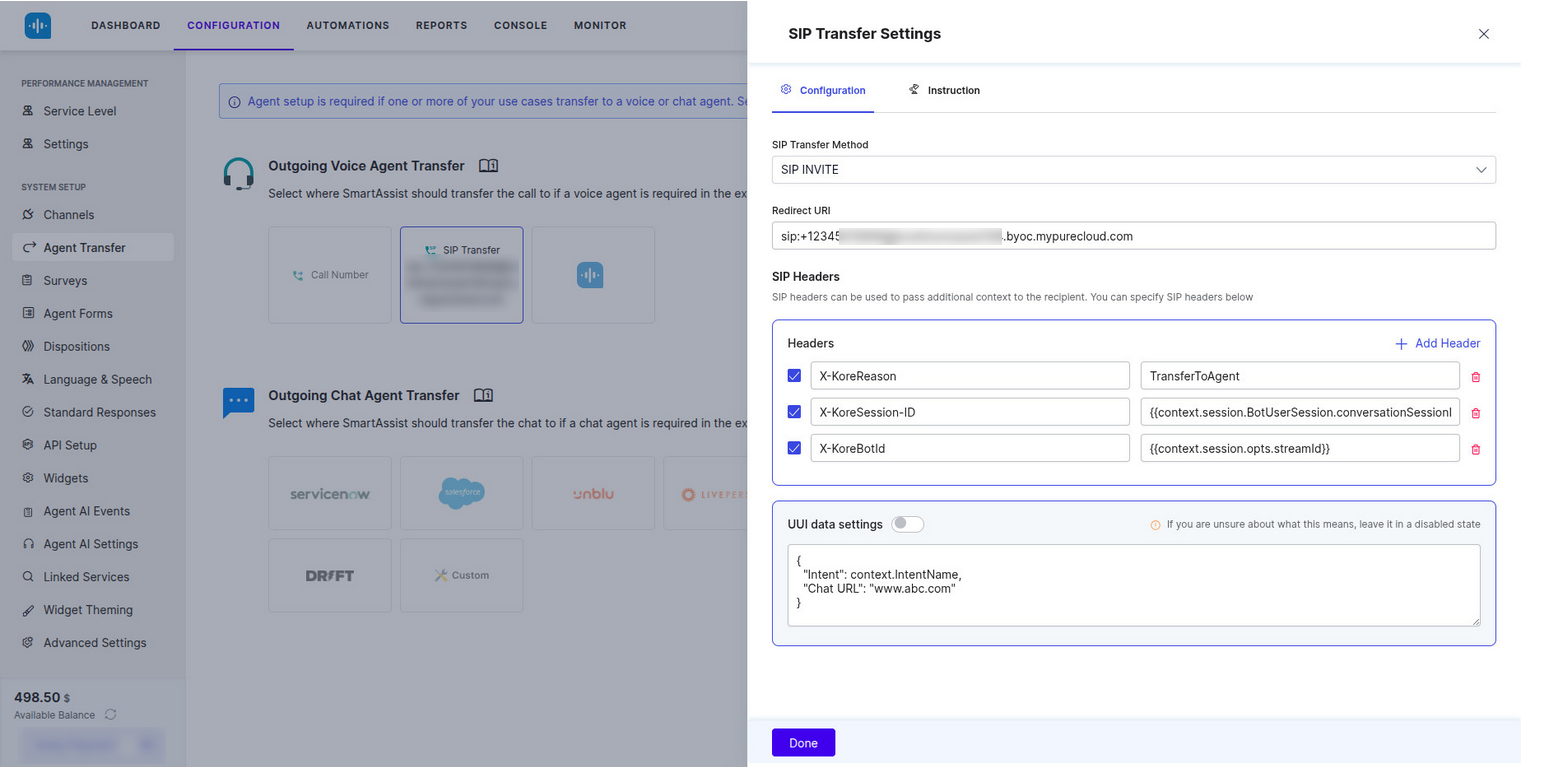
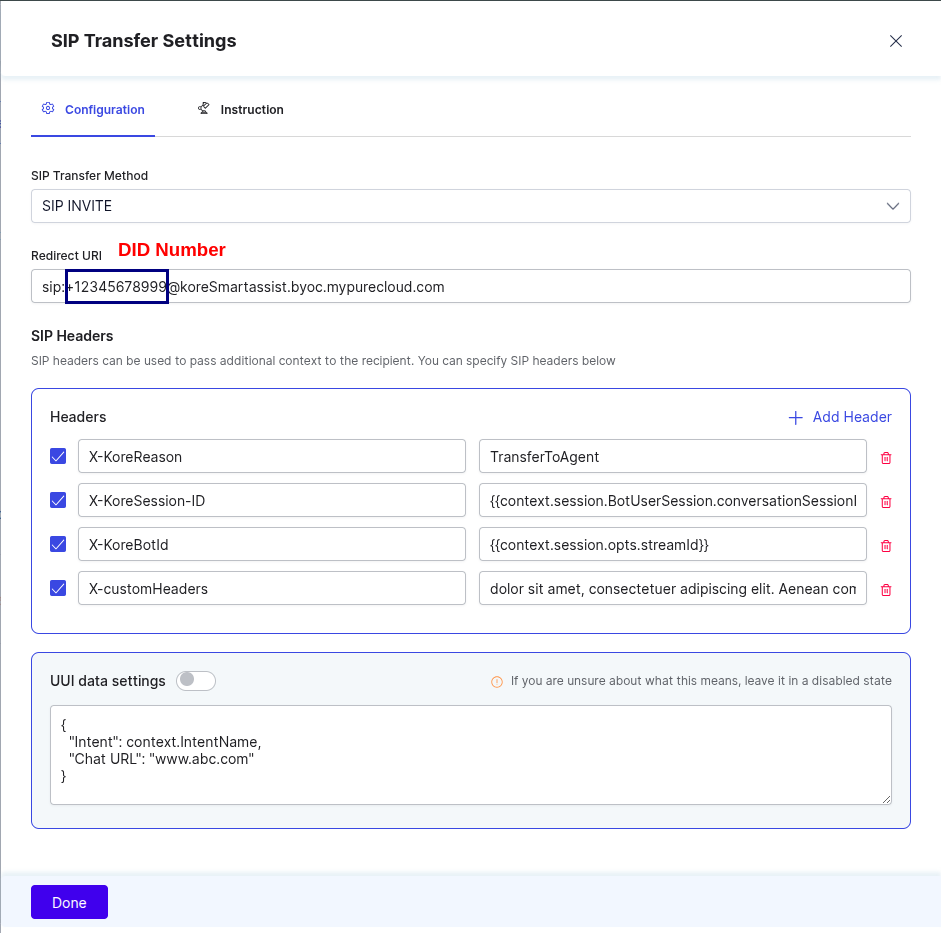
Genesys Side Configuration for Agent Transfer
Inbound (Kore.ai to Genesys)
Step 1 – Queue
If you haven’t created an Agent Queue to route live agent transfers, create and add the necessary members.
Step 2 – Architect Flow
Create an Inbound Call Flow
Create a new Inbound Call Flow to transfer the inbound calls received by Genesys from SmartAssist.
- Sign in to Genesys Cloud.
- Click Admin > Architect.
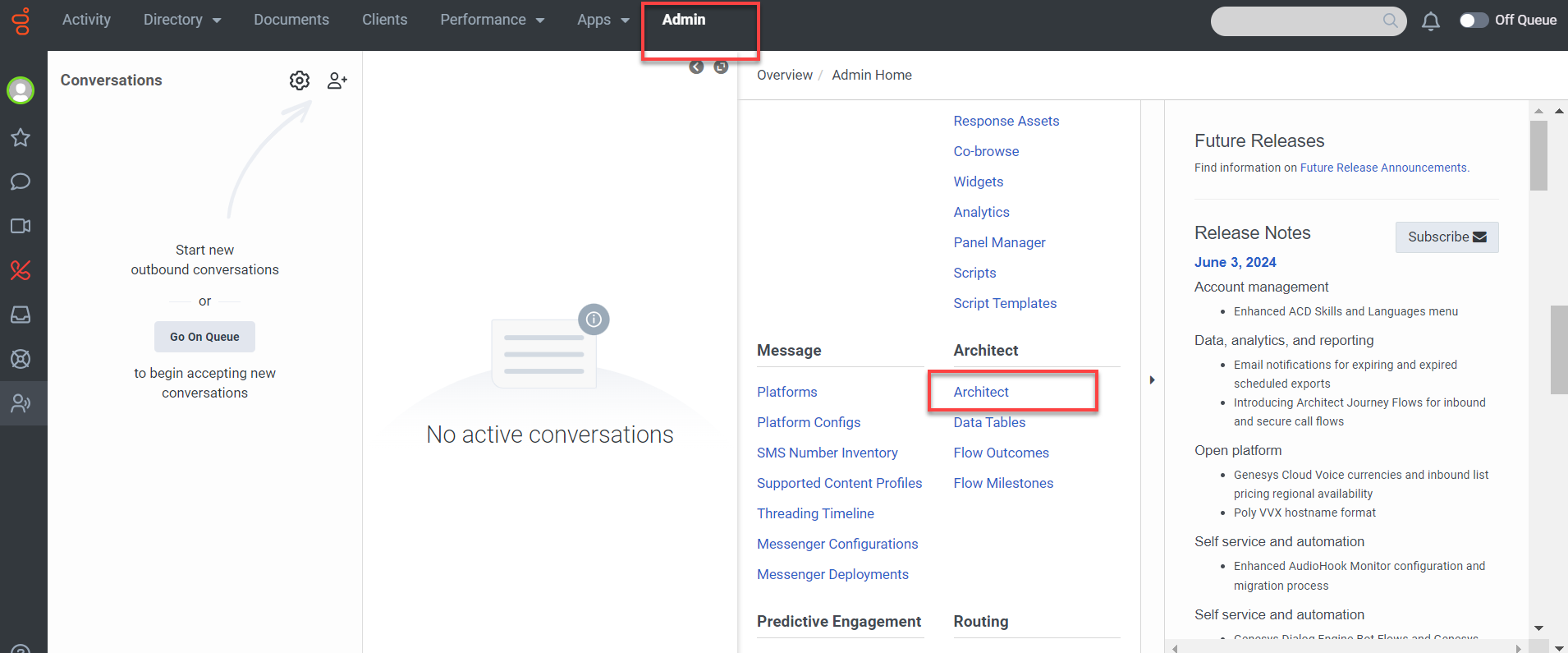
- Click + Add to add a new call flow.
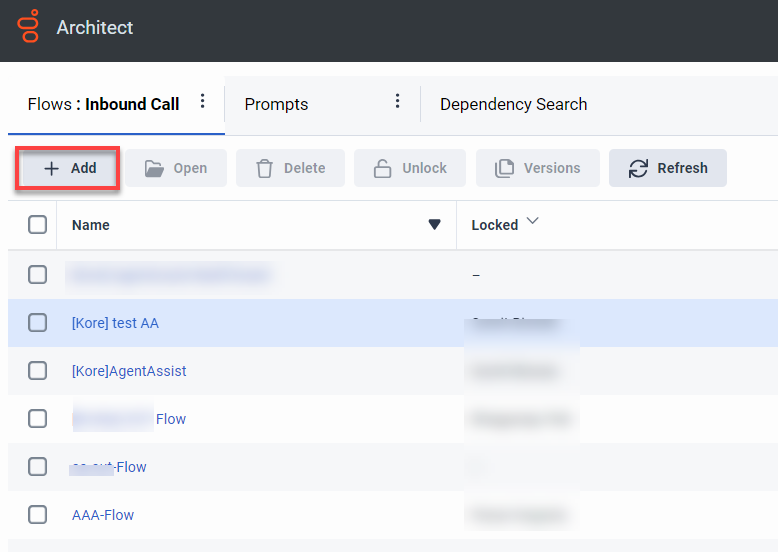
- Enter a name and a description in the Name and Description fields.
- Click Create Flow.
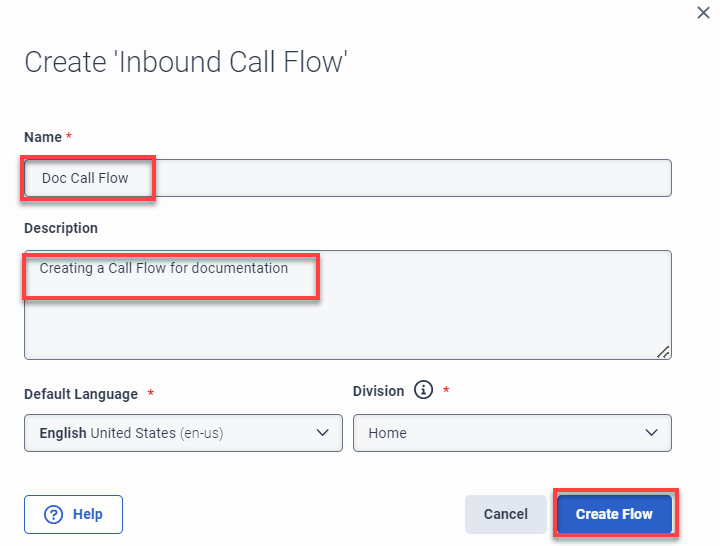
- Create the flow (Add tasks) in the Main Menu or create a Reusable Task and mark this task as “set this as the starting task” from the ellipsis menu in the top right corner.
- After the Start node, add a Get SIP Headers node in the architect flow.
- The immediate next node should be a Set Participant Data node in the architect flow.
- Add at least one Transfer to the ACD node and point it to the Queue you want to use for agents.
Step 3 – DID Numbers
You need a DID Number that is internally routable inside Genesys.
DID Ranges
Create a new single-number DID range (keep start and end as the same number) that is not a typical external number. For example, +12223334444.

For the Service Provider, select Internal, and add a comment that explains the purpose of the range.
DID Assignments
Assign the number you created to the Call Route from Step 4.
Assignee Type: Call Flow
DID Number: Your number
Step 4 – Call Route
- Go to Admin > Call Routing.

- Click the + button to create a new call route.
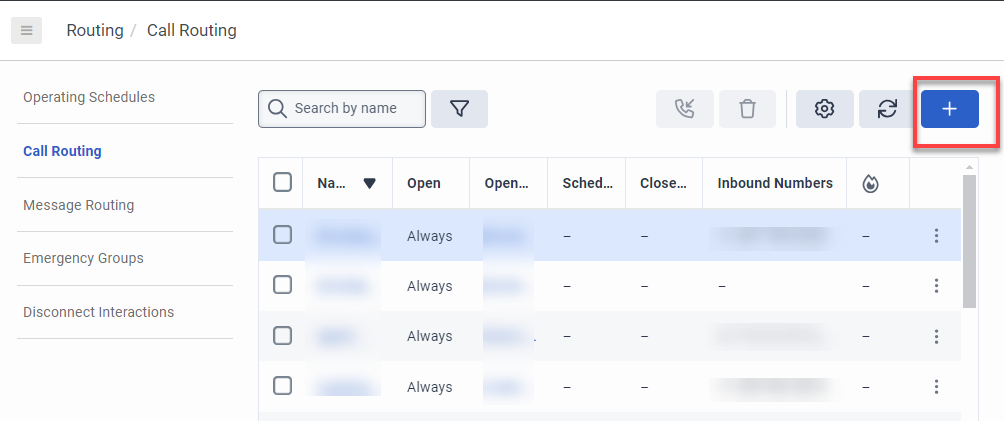
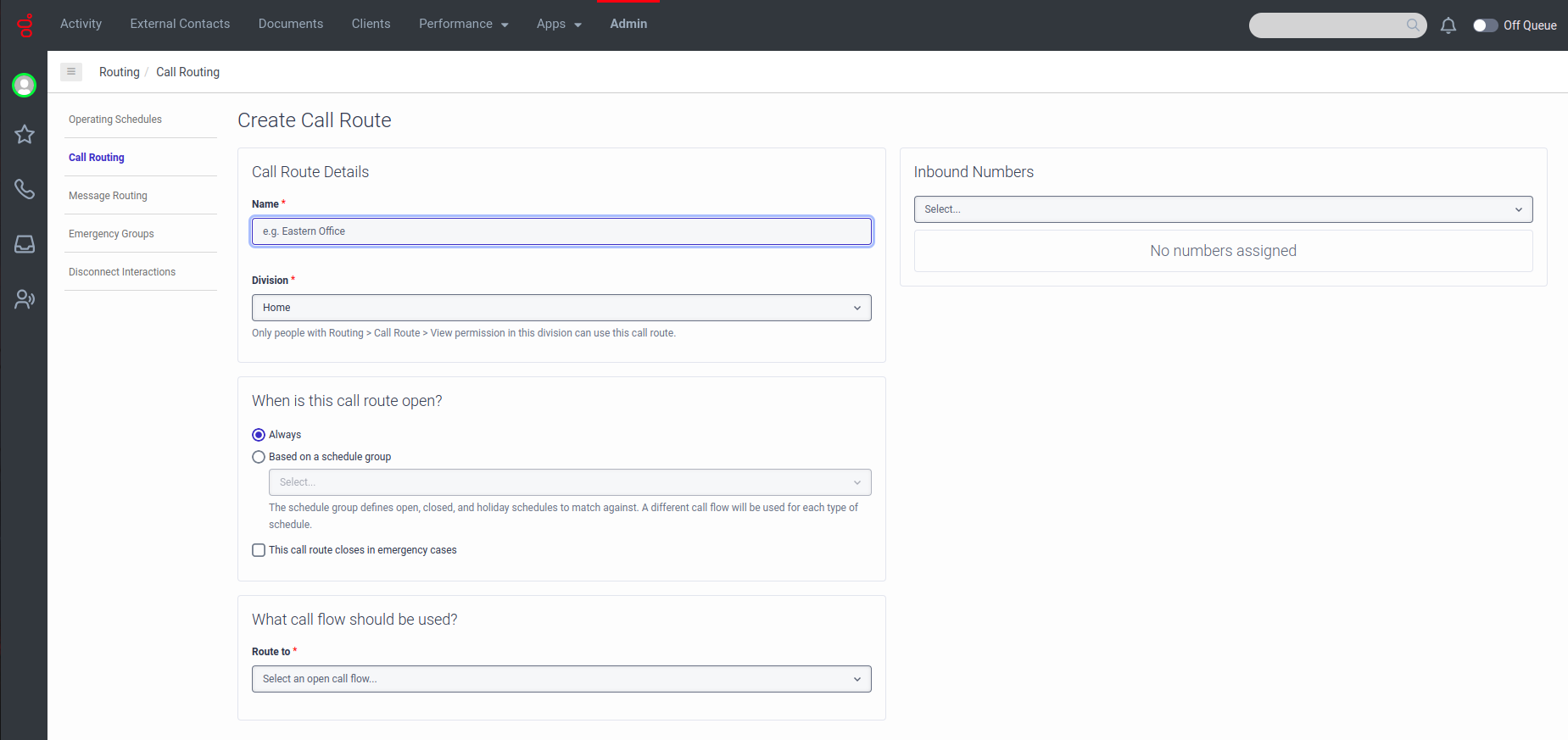
- Set up a call route to map the DID Number created in Step 2 to the call flow created in Step 3.
Step 5 – Trunk
Configure a trunk that connects the Kore.ai Session Border Controller (SBC) for your region. To configure a trunk:
-
- Sign in to Genesys Cloud using your Kore credentials.
- Select Architect.
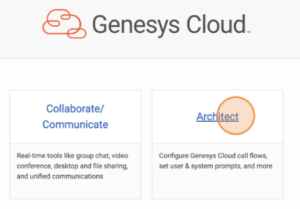
- Click the Admin tab to open the Admin console.
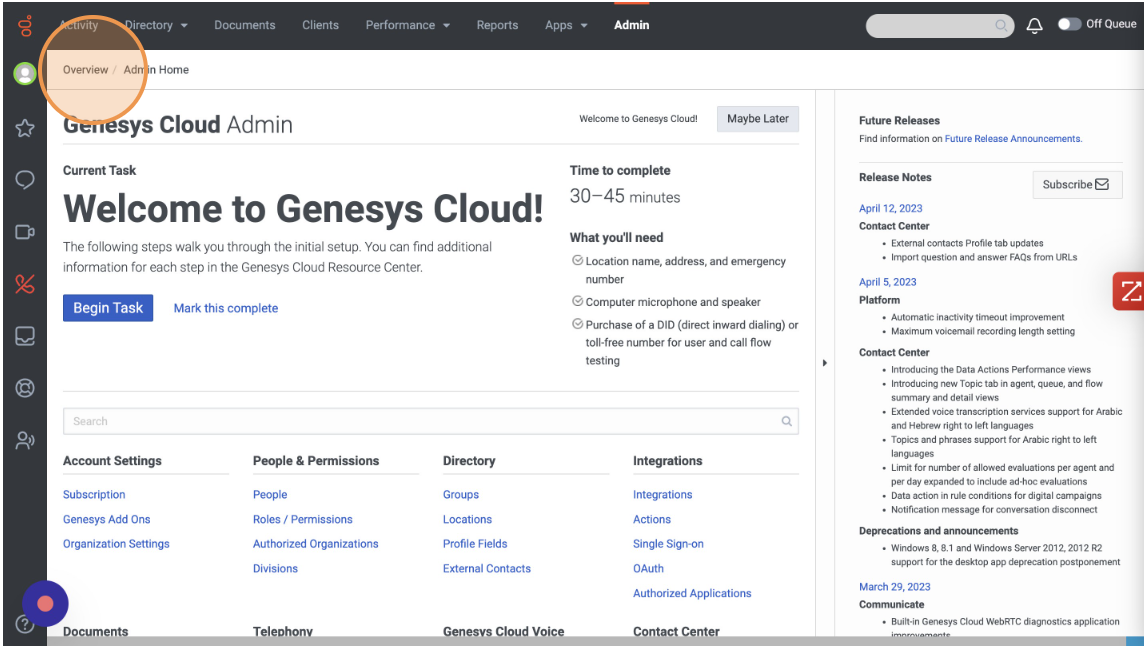
- Either search with External Trunks or click Telephony > External Trunks.
- Click + Create New.
- Give External Trunk Name.
- Type should be BYOC Carrier.
- Select Generic BYOC Carrier as subtype.

- Select the Number Plan Site.

- Give a unique name for the Inbound SIP Termination Identifier.
- You will be able to see the Inbound Request-URI Reference.

- Scroll down and under SIP Access Control, add the SmartAssist Voice Gateway (SAVG) IPs. This IP address varies depending on the region.
- Click the Media section, scroll down, and select Recording. Select all the Optional Recording fields. Select the Codec as Opus, or any other suitable option, and then select Dual Channel.
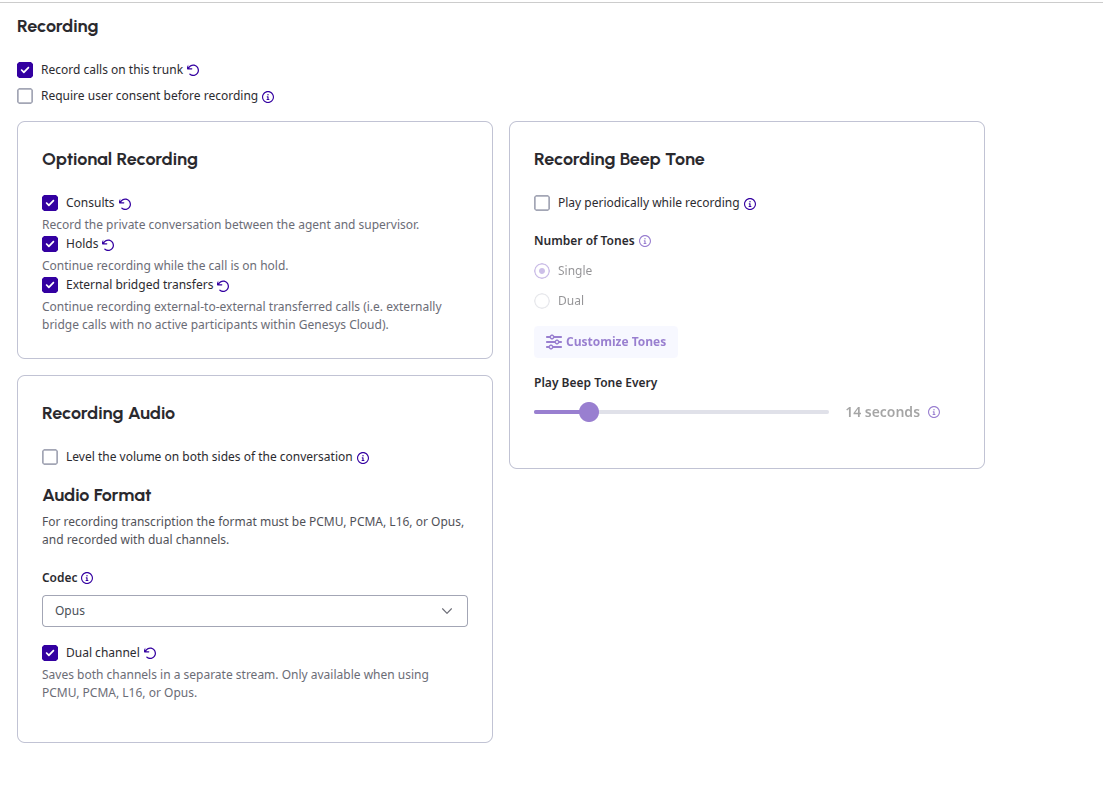
- In the Protocol section, turn on the Conversation Headers toggle.

- Click Save External Trunk.
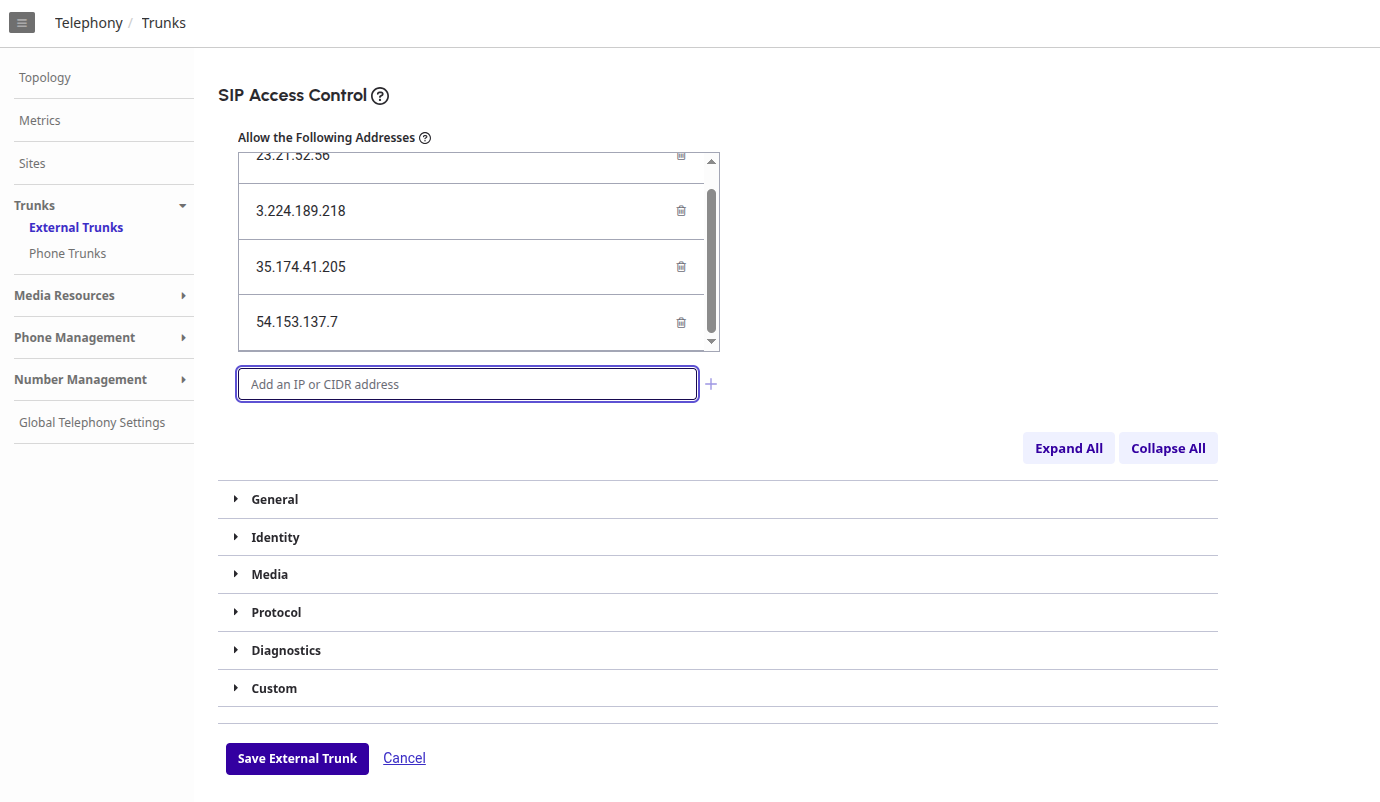
AgentAssist Integration
1. Add the Bot
Use the same automation bot that was used in the SmartAssist for the automation.
- Log in to AgentAssist.
- Go to the Automation tab.
- Click Add Bot.
- Attach a bot from the Library.
- Select the bot, click Convert Bot.
2. Follow the Documentation for AgentAssist Integration with Genesys
Follow steps 1-4 from the documentation for the AgentAssist integration.
Points to be noted:
-
- In the above link, in step 4, while adding the AgentAssist bot credential, add the details of the bot added in the previous step.
- Add a new field in the Genesys datatable with the following details:
Name: isSipInviteTransferFromKore
Data Type: String
Value: True - No need to configure AudioHook or enable AudioHook monitor at the queue level.
- No need to add the “is Audiohook Enabled” field in the data table.
Test Your Integration
Call the SmartAssist Number, purchased in the previous steps. After a successful agent transfer from SmartAssist to Genesys, the signed-in Genesys agent can accept incoming calls.
- Click the Answer button to accept the call.
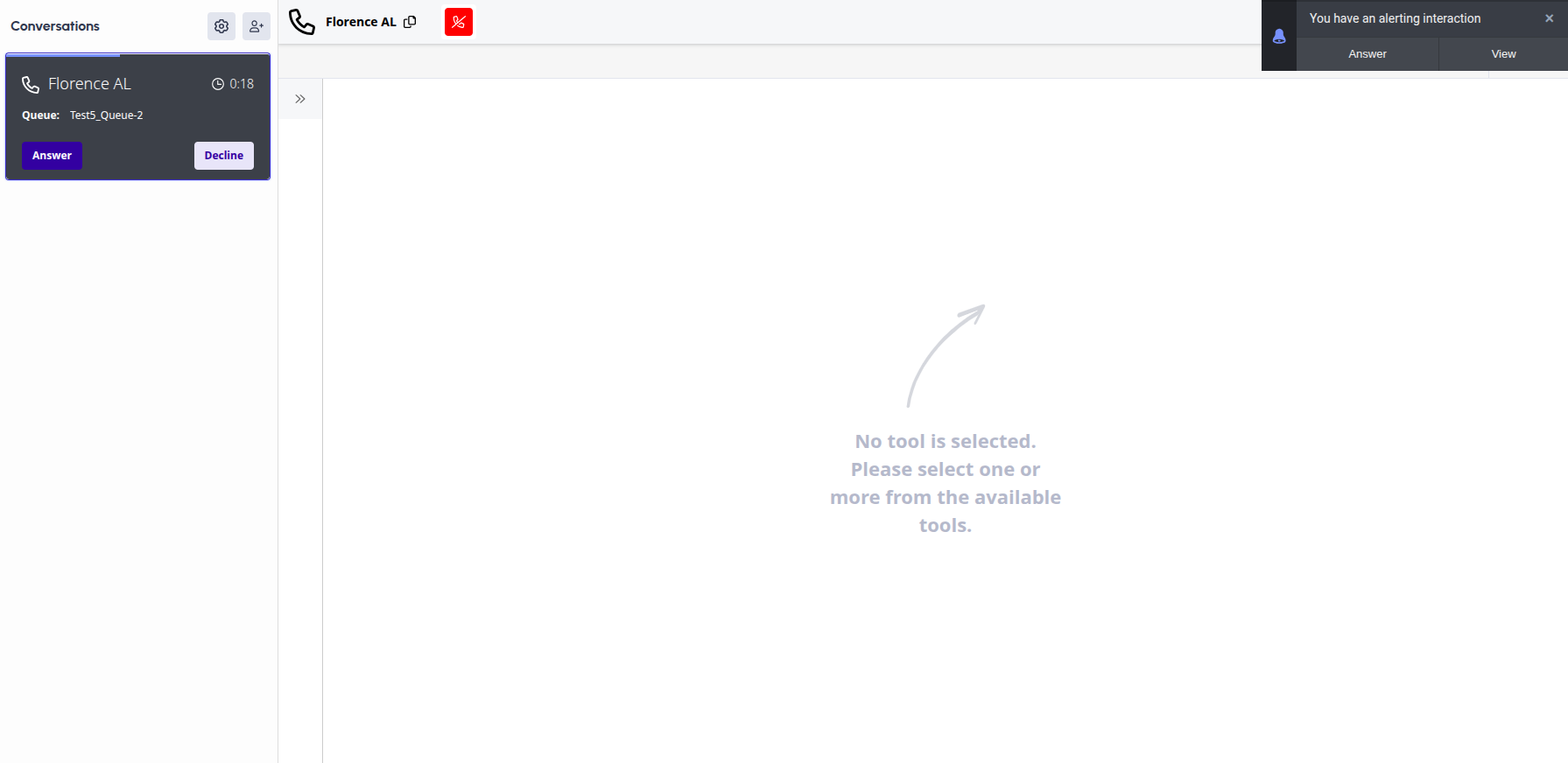
- Click Tools and select the interaction widget, which you configured in the earlier steps.
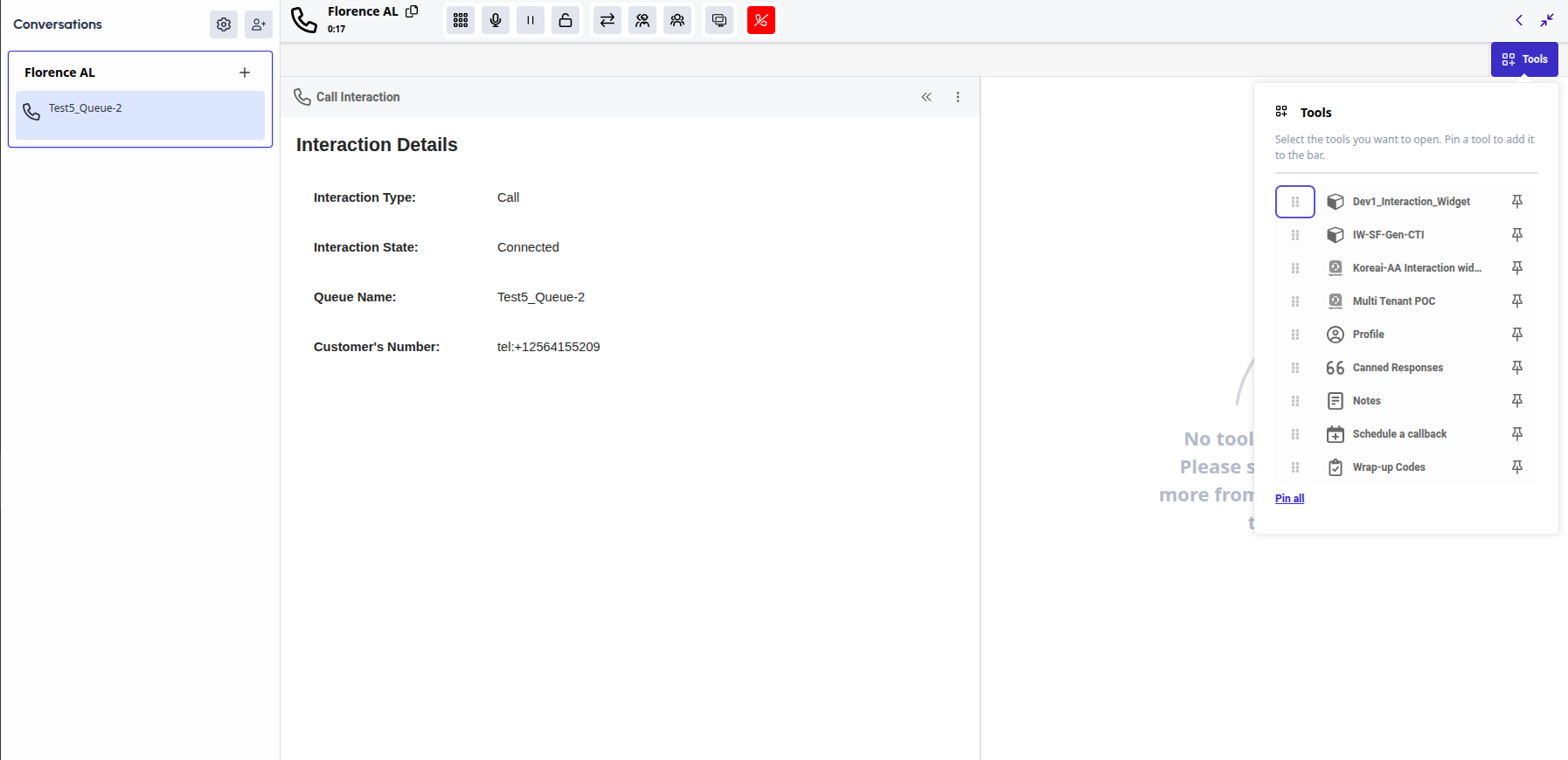
- The AgentAssist widget appears on the right side of the Genesys Agent desktop.
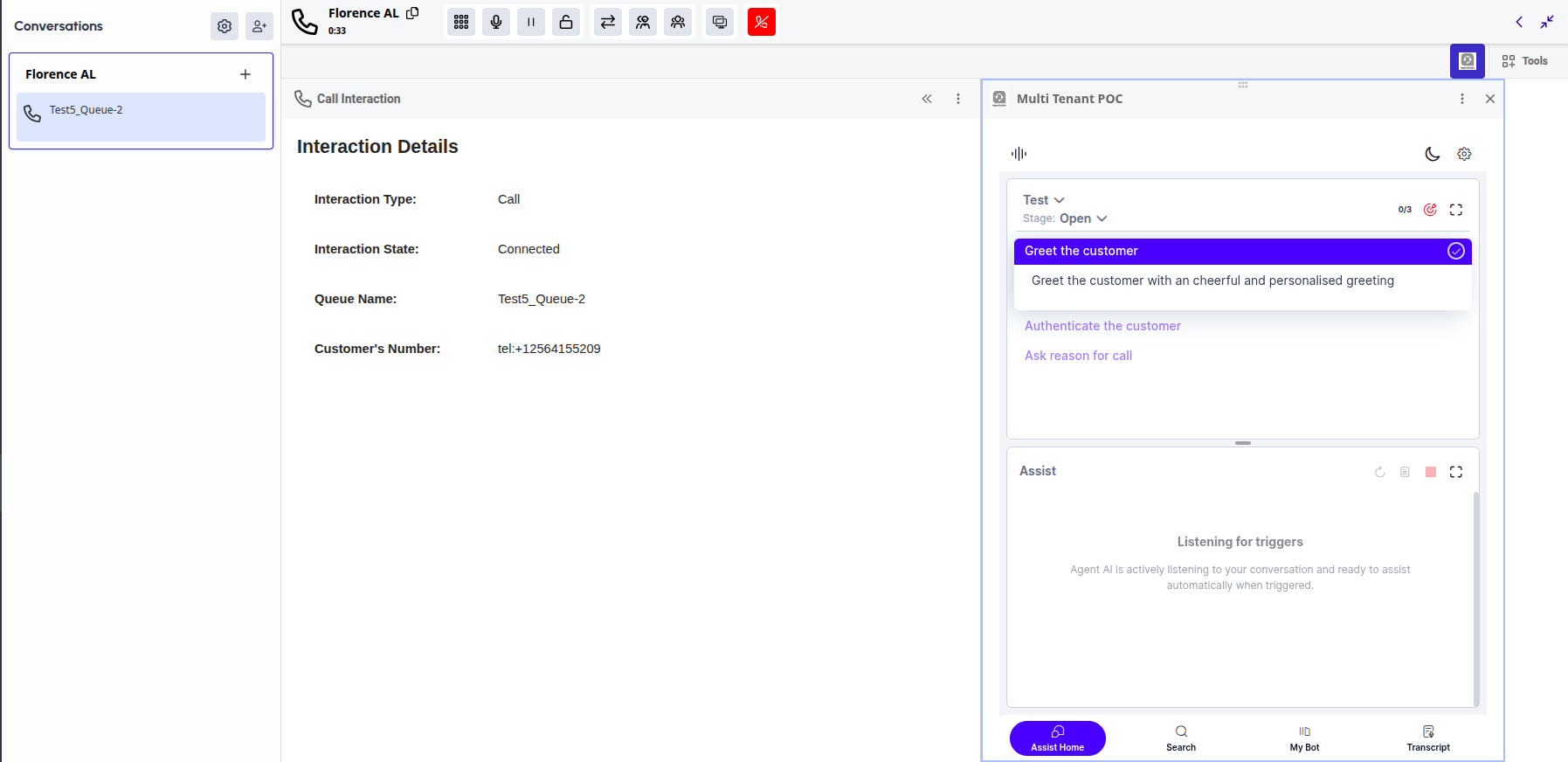
- Switch to the AgentAssist Transcript tab to view the user-bot history and the summary between the user and the automation bot. All the real-time transcripts between the live agent and the user are captured in the transcript tab.
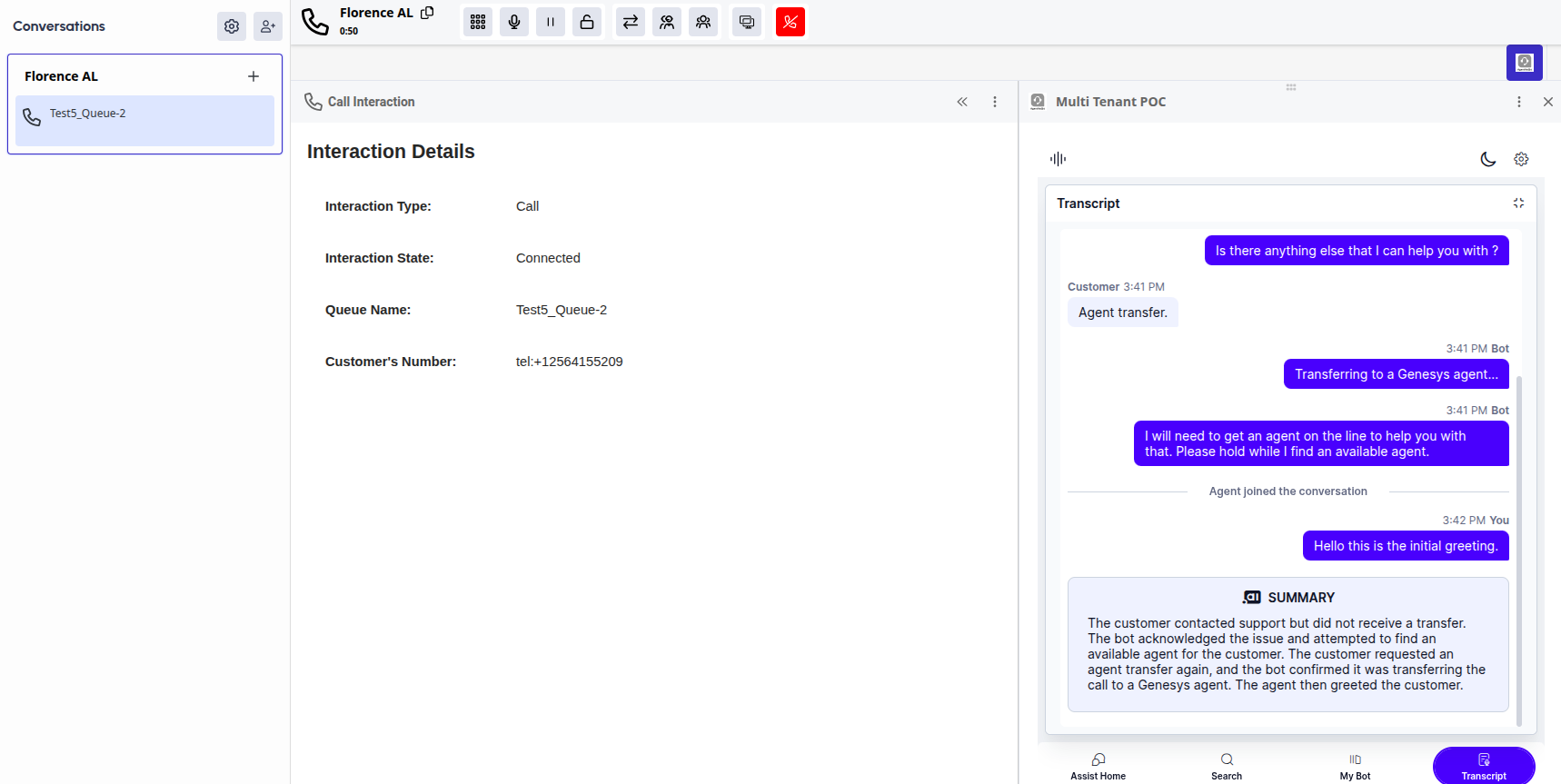
Check the Interaction Details in SmartAssist
You can view all interaction details between the user and bot during the call and the conversation between the user and live agent after agent transfer in the SmartAssist dashboard:
